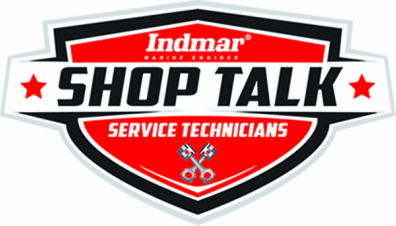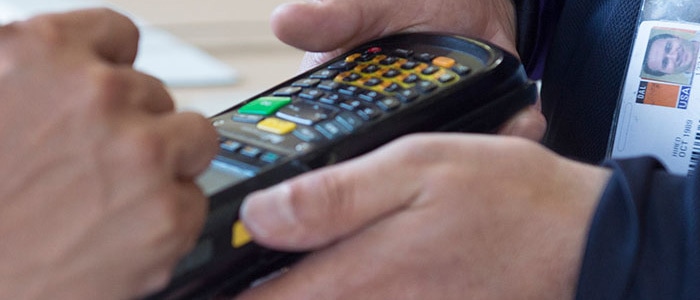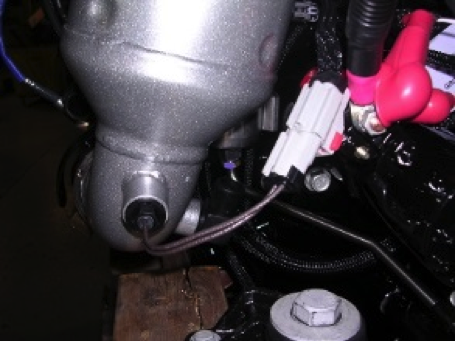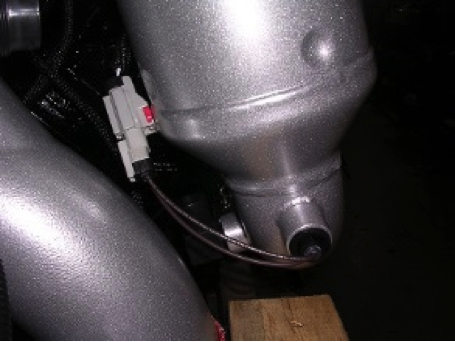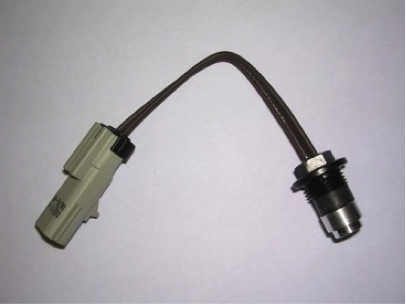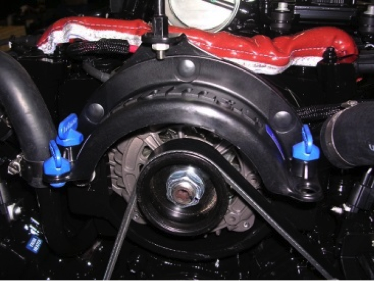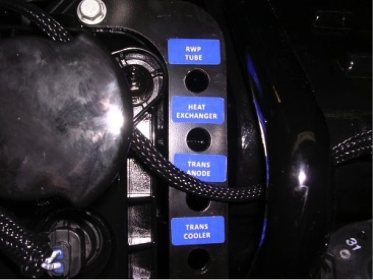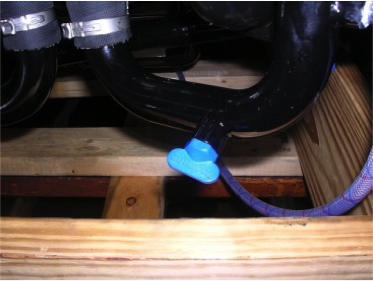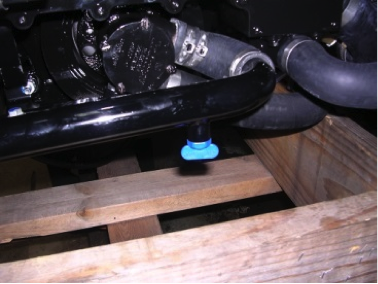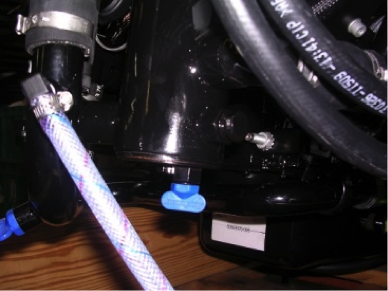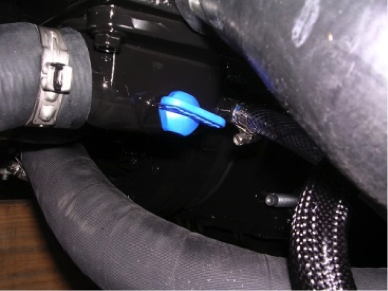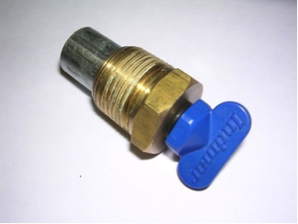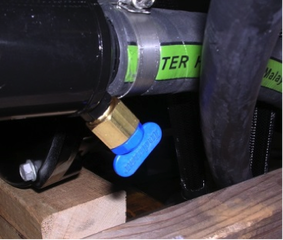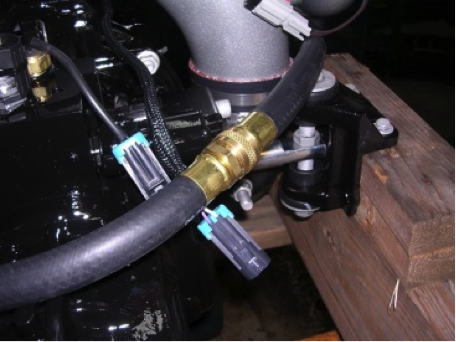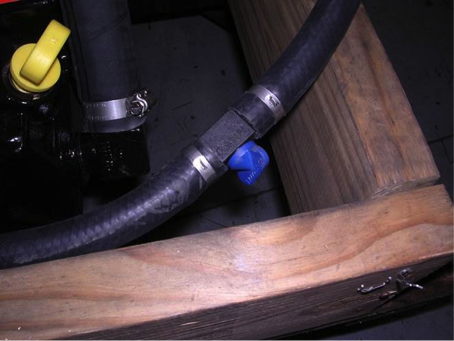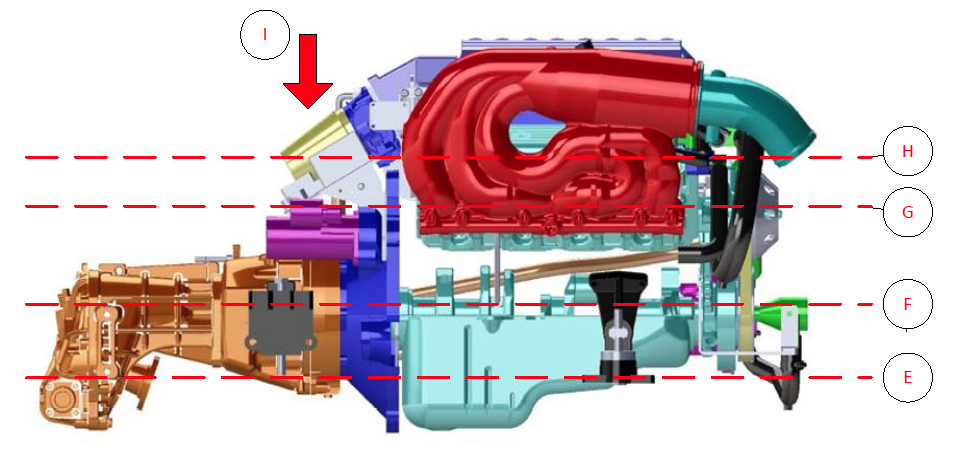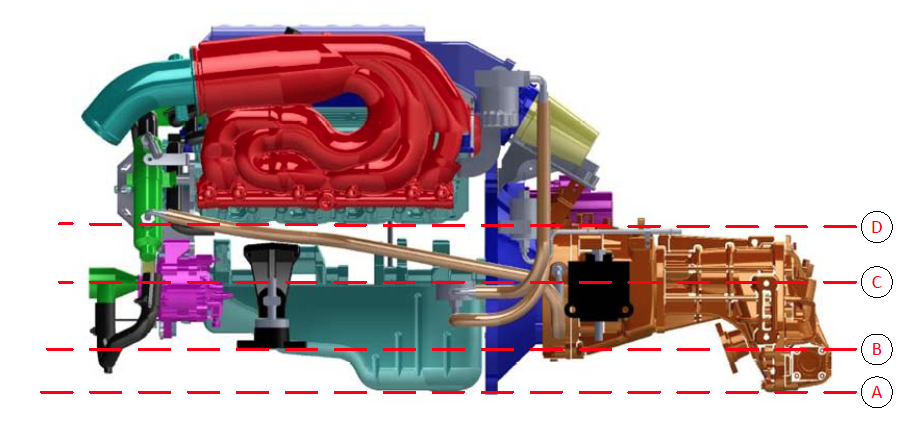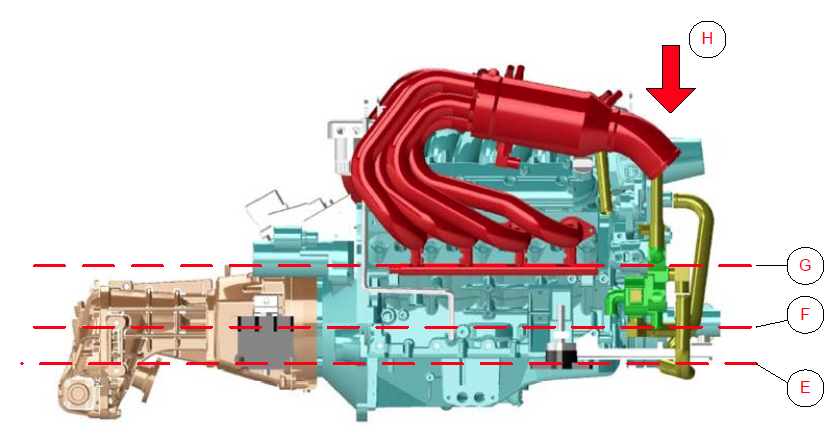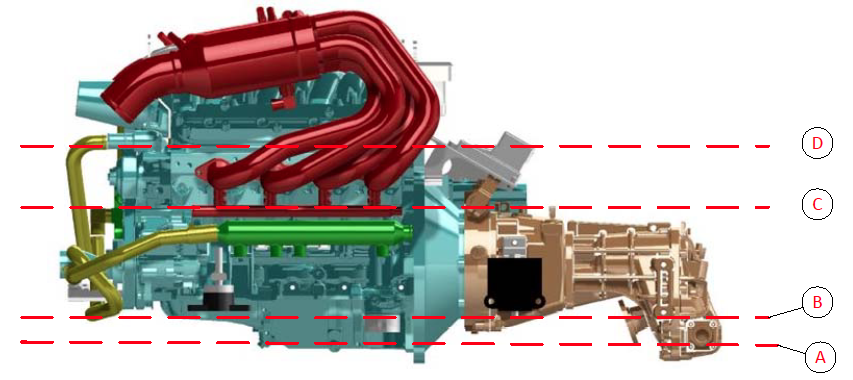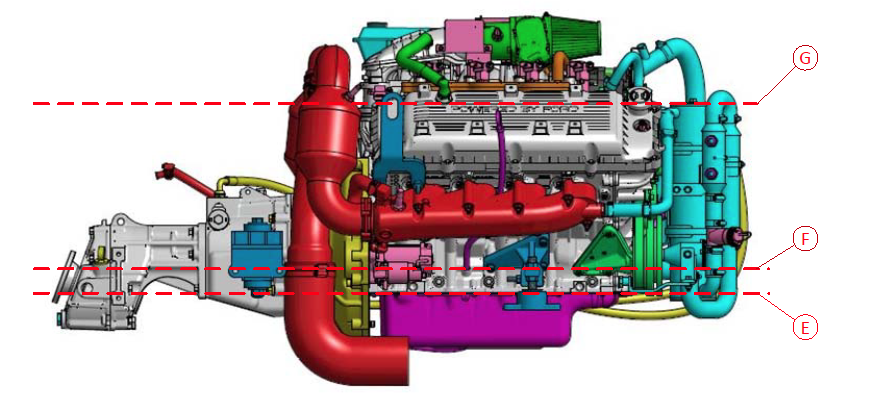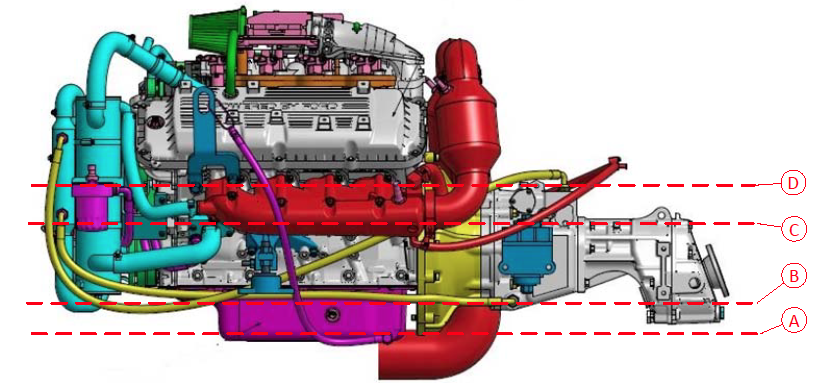|
Your shipment is being transported via freight truck, and Indmar Marine Engines wants you to be aware of your rights and responsibilities as the end recipient (from here forward known as the "consignee"). To ensure that you are receiving what you ordered, and in acceptable condition, you must inspect, examine, and inventory your shipment as it is unloaded. On arrival, inspect the shipment immediately for obvious signs of damage. Any and all shortages and damages must be written on the Bill Of Lading or Freight Bill. Should you determine that any items are damaged or missing, you MUST note the item, the discrepancy, and the condition before you sign it! Then call the freight company to report any problems. You should open cartons and containers. If there is the slightest doubt that the merchandise is damaged (concealed or not) it must be noted on the Bill Of Lading or Freight Bill, or the liability to prove that the delivering carrier did the damage becomes your responsibility. Do not be intimidated by the driver. They cannot leave until the Bill Of Lading or Freight Bill is signed (regardless of how much in a hurry they are or how late they are). The carrier's driver should help you receive your shipment and answer your questions. While your driver is there, compare the pieces of freight you are receiving to your carrier's freight bill. When you've determined that the condition and quantity of your freight is acceptable, you can then sign the delivery receipt. The driver will provide you with a copy, taking the signed copy with them (as a delivery receipt). If one is not offered, request one, as is your right. The Bill Of Lading or Freight Bill is the only documentation of the condition of a shipment when it arrives at your location, and without this document, we cannot hold others accountable for items damaged or missing. Your signature on the delivering carrier's freight Bill Of Lading (BOL) constitutes acceptance of the merchandise as is and in good order. If you do not inspect before signing you are, for all practical purposes, waiving the right to collect on a damage claim even if the damage is discovered later (known as concealed damage).
If there is discovered damage: if the box, crate, or merchandise is visibly damaged, refuse the delivery and contact Indmar Customer Service immediately. The merchandise will be shipped back to its origin at no charge. Make sure to notify Indmar Customer Service of the situation as quickly as possible so we can follow-up on our end to assist with any required procedures. If there is concealed damage: although we strongly recommend inspecting the shipment prior to signing the delivery receipt, some still do not do so. If the consignee or their representative sign for the shipment, and then at a later time discover that there is some damage not noticed at delivery (called "concealed damage"), then a claim will need to be filed by the consignee against the freight company - as a shipment is technically the property of the consignee once it is loaded onto a freight truck, it is the consignees responsibility to pursue a damage claim for replacement or compensation. In the event of concealed damage, it is vital that you immediately document and photograph (if possible) the packaging and the damage. You must keep the packaging. Do not move the item, but call the carrier and report the damage. They will begin a concealed damage claim and ask for an inspection. You must also notify Indmar Customer Service so that we are aware of the situation and can be of assistance if required. The inspector will determine if the damage was possibly carrier caused. Please note: If the consignee has signed for the shipment indicating there was no damage noted at time of receipt, the consignee would then have to take up their claim with the freight carrier if concealed damage becomes apparent after receipt. Many people order products in advance of need, and wait until it is to be installed to finally check the condition of the product (sometimes weeks or even months have passed); in these situations, it is the consignee's sole responsibility to contact the freight carrier and pursue a claim. Remember: in cases of concealed damage, you signed the document saying everything was OK; a report and a claim must be filed with the carrier immediately - the sooner concealed damage is discovered and reported, the better. Additional items to consider:
Further measures that may help in the claim process include the following:
If you have someone signing the freight bill for you, for whatever reason, they are acting as your representative; you should inform them that they should check for missing or damaged items. If the freight is signed for without notating damaged or missing pieces, it is almost impossible to get the freight companies to take responsibility. We realize this can be a time consuming process, but much of the hassle can be eliminated with prompt, well-documented action with the carrier. We cannot be held responsible for freight damage. Ultimately, it is the Freight Company's responsibility to deliver the shipment in good condition, and it is the consignee's responsibility to inspect and sign for the products and notate any damaged pieces.
1 Comment
The 2017 Model Ford Based engines will benefit from a few changes designed to make the product more robust and to make some maintenance procedures more convenient. For the 2017 model year, a change was made in how we monitor the engine to make sure there is adequate water flow. The paddlewheel style water flow sensor that was used during the 2015 and 2016 model years has been eliminated. In the place of the water flow sender, we are using a pair of components called skin temperature sensors. These sensors are installed on each of the stainless steel exhaust elbows just after the exhaust manifolds and before the catalytic converters. If there is a lack of raw water flow in the system, the increased temperature of the exhaust elbow will cause a trouble code to be set. The codes and the criteria for setting the codes are as follows: SPN 441 FMI 3 Bank 1 High Voltage (Greater than 4.9V for 1.0 second) SPN 442 FMI 3 Bank 2 High Voltage (Greater than 4.9V for 1.0 second) SPN 441 FMI 4 Bank 1 Low Voltage (Less than .1V for 1.0 second) SPN 442 FMI 4 Bank 2 Low Voltage (Less than .1V for 1.0 second) SPN 441 FMI 15 Bank 1Temp Higher than Expected - Level 1 (Greater than 190F for 8 seconds) SPN 441 FMI 15 Bank 1Temp Higher than Expected - Level 1 (Greater than 190F for 8 seconds) SPN 441 FMI 0 Bank 1Temp Higher than Expected - Level 2 (Greater than 210F for 6 seconds) SPN 442 FMI 0 Bank 2Temp Higher than Expected - Level 2 (Greater than 210F for 6 seconds) Note: Level 1 and Level 2 pertains to derate (power reduction) values. Level 1 power reduction is set at 35% of TPS authority. 35% TPS will leave the engine RPM variable upon load. Level 2 power reduction is set at 12% TPS authority and leave the engine rpm variable upon load. The other changes for 2017 are primarily for greater convenience during the winterization process. First, we have added some brackets that give you a place to store the drain plugs as they are removed from the various components. The brackets are labeled specific to the engine so when all of the drain plugs are placed in their labeled storage positions, you are done draining the water from the cooling system. Raw WaterTube Drains Note: The blue drain plugs are P/N 605176 Heat Exchanger Drains Note: The round style heat exchanger has an anode (P/N 865055) that needs to be inspected and replaced as necessary. The square style heat exchangers do not have anodes. Crossover Hose The crossover drain hose must be separated to drain the water from the exhaust manifolds. Some models use a connecting block and blue drain plug like in the photo on the right. It is critical to keep the bilge in a tow-sports boat as dry as possible. Engines in tow-sports boats are mounted very low making water in the bilge a serious problem. Please refer the following diagrams for 5.7L GM, 6.0/6.2L GM and 6.2L Ford models to relate water levels in the bilge of the boat to possible engine, transmission and component issues. 5.7L GM Port Side View –Water Intrusion Levels E. Crankshaft pulley in water. Water gets pulled up by serpentine belt and splashes water on front of the engine. Output shaft of v-drive in water. Possible water intrusion in v-drive. F. Base of dipstick tube in water. Possible water intrusion. Engine and transmission mounts compromised G. Flame arrestor in water allowing water to be drawn into engine through intake. Top mount starter submerged. Transmission and v-drive vents and dipsticks under water H. Valve covers in water. Water flows through flame arrestor directly into engine. ECM and electrical box in water. Electrical failure to follow. I. Because of the location of the flame arrestor, these engines are also susceptible to water intrusion from above. Wet riders entering the boat or rain water can easily be sucked into the flame arrestor when the engine is running 5.7L GM Starboard Side View |
|
© COPYRIGHT 2022 INDMAR MARINE ENGINES - ALL RIGHTS RESERVED.
PRIVACY POLICY | COOKIE POLICY | WEBSITE ACCESSIBILITY
ACCESS MACHINE-READABLE FILES CREATED AND PUBLISHED BY ANTHEM BCBS
PRIVACY POLICY | COOKIE POLICY | WEBSITE ACCESSIBILITY
ACCESS MACHINE-READABLE FILES CREATED AND PUBLISHED BY ANTHEM BCBS
